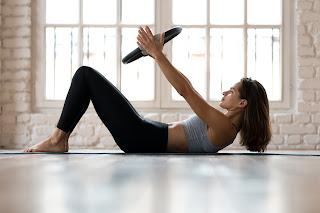Understanding Abdominal Training
Understanding abdominal training, requires you to understand how to stimulate muscle growth. Your abdominals are not unicorn muscles, they require the exact same stimulus as every other muscle in your body, with one specific difference, everyone wants to see them clearly but just like every other muscle, your body fat needs to be low enough for them to pop!
1. Goals
When programming abdominal work it's important to first decide what your goal of training them is.
To see your Abdominal Definition?
Improve strength for Posture/Pain/injury management?
2. How Often Should I Train My Abdominals?
You do not need to train your abdominals every day or every time you workout! It's important to train your abdominals with intention and hard and you know muscle doesn't grow in the gym it grows when you recover.
The only way to know the exact prescription is to be your own guinea pig and see how you recover from proper abdominal training. 2-3 times per week with the right training is a good place to start. See how you progress and recover over a 6 week period and gradually add in more days, if you need it. I would say training abdominals properly 6 days a week is the absolute max.
You also need to be mindful of how a lot of abdominal training affects your heavy lifting, in particular compound lifts. You don't want your abs to be limiting your ability to train properly!
3. How To Train Abdominals?
For a complete beginner, during rehab of an injury/surgery or other limitation bodyweight exercises are a great place to start. If lying isn't an option then it's possible to start working on strength from a standing position or other supported options.
For general, overall training I like 3 times per week training with 1-3 exercises. I use a mix of difficult bodyweight and weighted exercises.
Also a mixture of sets and rep ranges. I start the week with the heavy, low rep ranges, then move to the moderate rep range and finish the week with the highest rep ranges.
What does that look like?
Beginner
Monday - Lying Alternate Single Leg Lowers 3x5-10 each side 60-90 Sec Rest
Wednesday - Reverse Sit Ups 4x10-15 60-90 Sec Rest
Friday - Elbow Plank 3xMax Time 60-90 Sec Rest
Intermediate
Monday - Ab Crunch Machine 3x5-10 60-90 Sec Rest
Wednesday - Weighted Sit Up 6x10-20 60-90 Sec Rest
Friday - Roman Chair Knee Raises 3x20-30 60-90 Sec Rest
A Note On Spot Reduction
You will not lose body fat on your abdomen by doing hundreds of crunches every day. If you are genetically pre disposed to lose body fat from your abdomen first, then you will see a change there first. However, this varies hugely between individuals. I've seen some women lose most of their body fat around their abdomen first and others it's the last place they lose it. You are not doing anything wrong if the first place you lose body fat is not your abdomen.
If you want to reduce the size of your abdomen then you need to be in a calorie deficit and lose more body fat and see how your abdomen looks at the end of your specific fat loss phase. Take measurements and photos so you can compare every two to four weeks.
I hope that helps you to understand a bit more about training your abdominals. If you have any questions, please don't hesitate to drop me a message x




Comments
Post a Comment